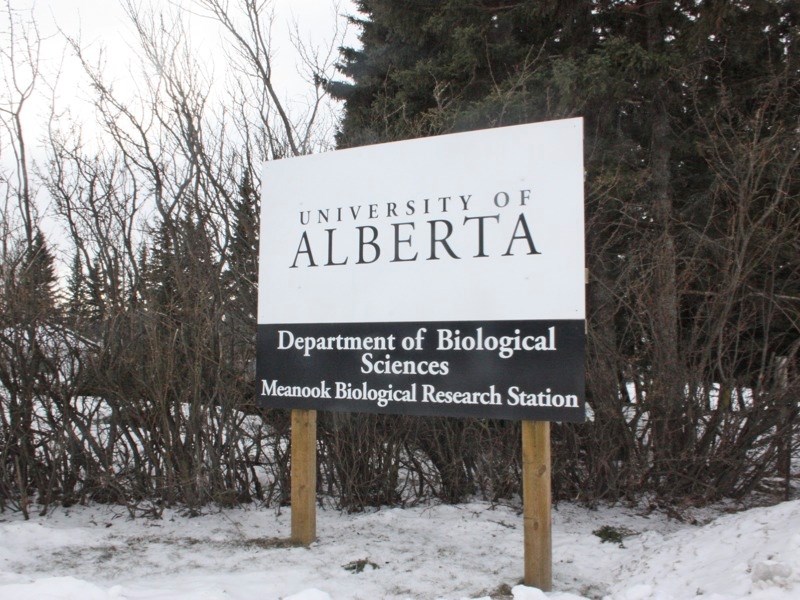The fate of the Meanook Biological Research Station (MBRS) is uncertain as the University of Alberta has terminated its lease of the federally owned facility.
It cost the university approximately $300,000 per year to operate the station 17 kilometres southwest of Athabasca, not including building maintenance, according to Sandy Robertson, communications manager for the U of A’s Faculty of Science.
The station sits on a fraction of the 530-acre Meanook National Wildlife Area, a protected pocket of land that straddles boreal forest and aspen parkland. The station includes a dozen or so tidy green and white buildings at the end of drive lined by towering conifers.
“We terminated our activity in September 2013 and initiated the return of MBRS to Environment Canada last year,” said Robertson. “This is currently in progress.”
The decision came down to dollars and cents, as well as a lack of interest from U of A researchers, she said.
“As the funding priorities shift, it changes the picture in some ways,” said Robertson. She said the facility used to be jointly supported by the U of A and the federal government through federal grants, but that those research grants have dried up.
In addition, said Robertson, “All of the professors who were doing research there have pretty much retired.
“Ellie Prepas, who was the lead at the station, left U of A more than 10 years ago for a position in Ontario at Lakehead University, and her research at the site waned,” Robertson explained. “The last research that we were involved in was focused on the ecology of songbirds and experiments using fish in the ponds — both of the researchers who carried out this work are now retired.”
Athabasca’s Marcia Birkigt and her sister Terra were both involved in those last U of A research projects: Marcia with the fish studies and Terra with the songbird studies.
“It was a project looking at northern pike and wood frog interactions,” Marcia recalled. “We were looking at the diets of northern pike and seeing if it was affecting the number of frogs in the area.”
Marcia now works for Alberta Fish & Wildlife and is going to school for a master’s in environmental protection. She cut her teeth at the station for four summers, most recently in 2008.
Her first job was assisting a graduate student in utilizing a study pond at the station, and also using the facility as a base from which to study lakes in the area. She later worked at the station for the Alberta Biodiversity Monitoring Institute.
In the years since U of A projects wrapped up, the university has simply allowed researchers from other institutions to use the Meanook site, said Robertson.
“It was really just being rented out,” she said. “We weren’t actively involved in the research ourselves.”
She conceded that those third-party researchers would likely “feel the loss of the station.”
Marcia was familiar with some of the contract projects, many of which were quite long term. She knew people from an American university who had been coming up for 10 years to look at peat bogs with a project related to global warming and methane.
“A university in Quebec would send students, and they worked out of there as well. It was kind of a great area for different universities around North America to base out of and do research,” said Marcia.
But amongst U of A biologists, Robertson said, “There’s just no appetite to conduct research out of that as a base.
“It’s not a remediation site, say, from oil industry and that sort of thing, and so I think a lot of the emphasis for the biological sciences is further north for the boreal forest.”
The U of A first partnered with the government at the Meanook site in 1983.
“In 20 years, a lot changes,” Robertson said. She noted a fire gutted one of the buildings at the station about three years ago, and that recent inspections showed a number of other buildings are due for upgrades.
“I think the next step is the federal government will just step in and take a look and decide whether or not they stay active as a research site there,” she said.
Environment Canada did not respond to a request for comment as of press time.
“I find it’s a little sad. It was a great research facility that allowed all kinds of projects to happen out of central and northern Alberta,” said Marcia.


